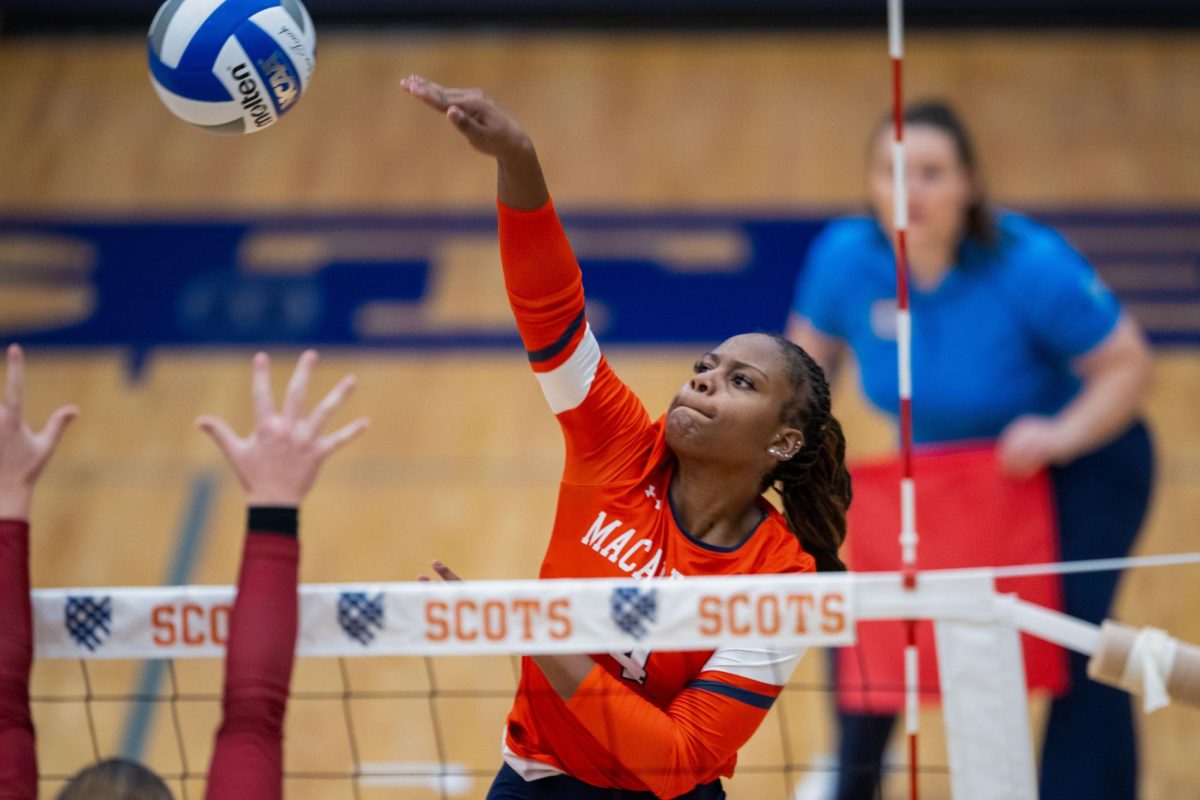
It seems like concussions are really having a moment right now. The release of the movie “Concussion,” starring Will Smith, added to the growing chorus of voices trying to bring the conversation about brain injuries to the mainstream. Since the release of the movie, the media have latched further onto the growing controversy and have increased their coverage of the issue.
Recent high profile concussion stories have included Tyler Sash, a former NFL safety who died in 2015 of a drug overdose at the age of 27. An autopsy revealed that he was already suffering from Chronic Traumatic Encephalopathy, or CTE, a degenerative disease caused by repeated head injuries. CTE causes a buildup of the protein Tau in the brain and can lead to depression, confusion and eventually dementia.
Additionally, there’s the case of Daniel Bryan, a WWE wrestler who recently retired despite being a fan favorite at the peak of his career. Bryan reported that he’d had ten diagnosed concussions and was suffering from seizures that developed after his most recent head injury. Also adding to the narrative is the case of Chris Borland, the former San Francisco 49ers linebacker who retired after his first season in the NFL due to fears over head injuries.
A concussion, otherwise known as a mild Traumatic Brain Injury or mTBI, is defined by the Centers for Disease Control as “a traumatic brain injury caused by a bump, blow, or jolt to the head or by a hit to the body that causes the head and brain to move rapidly back and forth.” This causes disorientation, light sensitivity, dizziness, headaches and a number of other potentially debilitating symptoms.
One thing I am always interested in is perception, especially the perceptions of students here at Mac. While I was thinking about concussions, I went out and conducted a face-to-face survey with a number of students here. The goal of my survey was to determine what students already knew, what they didn’t know and what they thought they knew about concussions. My survey asked four questions. First, I asked the respondents how common concussions are. Second, I asked them who they thought was at the highest risk for concussion. Next, I asked them how long it took on average to recover from a concussion, and for the final question I asked them if they thought that concussions had long-term effects.
For the first question, there was a large range in answers. Answers ranged from concussions occurring “not too often” to “too often.” The truth is much closer to the second answer: concussions are not a rare occurrence. In my research, most of the findings focused on concussions in sports, which are estimated by the CDC to be as high as 1.6 to 3.8 million per year. It is important, however, to note that athletes are not the only people who are at risk for concussions.
The answers to question two primarily focused on athletes, but this is only part of the whole concussion picture. According to the Mayo Clinic, “Being involved in a motor vehicle collision … pedestrian or bicycle accident … being a soldier involved in combat … a victim of physical abuse … falling … [or] having had a previous concussion” all leave someone susceptible to a potentially traumatic brain injury. Further, while the discussion of concussions in sports often focuses on football, there is risk involved in every sport. Concussions are found in almost all sports. The data I found showed that ice hockey and lacrosse were the second and third riskiest sports for head injuries. After that comes women’s soccer.
For the third question, there were many different opinions. Some thought it took a week to recover, while some thought a month, a year or more. The safest answer, and also the correct one, that only some people put down is that recovery time depends on the severity of the injury. When athletes get concussions during the season, they are allowed to return only once they have been cleared by a doctor.
This usually involves passing a cognitive test to make sure that the brain is once again operating at its normal levels. It has become increasingly common for teams to require members to take a baseline test at the beginning of the season to determine the level at which their brain normally works. After a concussion, the athlete retakes the test so that their cognitive functioning can be compared to normal levels. If their brain is working significantly below their baseline score, they are not allowed to return to play.
This recovery period is extremely critical because suffering a second concussion before the brain has totally recovered from the first is extremely dangerous. In rare circumstances, these compounding concussions give way to what is called second impact syndrome, which causes massive swelling of the brain and is often fatal.
For the fourth question, the vast majority of students I interviewed agreed that concussions did in fact cause long-term effects, though many did not know what they were. One of these effects is post-concussion syndrome, which could last from a few weeks to a few years. This is when the sluggishness, headaches and disorientation caused by the concussion last much longer than they should and don’t go away. I’ve heard of people who have suffered high frequency hearing damage due to a concussion, and of one person who actually developed a speech impediment after a severe head injury. Overall, however, the traditional way of thinking has been that concussions, if allowed to heal properly, should not have serious long-term effects.
This way of thinking has been challenged on a number of fronts recently. One is the discovery of CTE, which is fairly recent. There is little reason to believe, however, that anyone outside of professional athletes runs a deep risk of getting CTE. Even more disturbing are recent findings that show that even minor head injuries and concussions can have lifelong repercussions. Recent findings published in the Canadian Medical Association Journal report that the risk of suicide is three times higher amongst individuals who have suffered just one concussion. Additionally, research conducted by scientists at Purdue University suggests that even sub-concussive blows taken in sports are enough to cause “substantive neurophysiological changes,” and that the number of sub-concussive blows taken by an athlete during a season corresponds to poor scores on a neurocognitive test.
Concussions have certainly had their impact here at Macalester as well. Ryan Fleming ’16, a linebacker for the Scots, had his final season cut short after suffering a concussion during a game against Hamline University. It was his second concussion of the season; he had just returned from one that he’d received two weeks earlier. While his first concussion was relatively minor, the second was very serious. During a defensive drive, Fleming was running to tackle Hamline’s running back when they made head-to-head contact. An unrelated timeout was called, and Fleming attempted to go towards the sideline where the rest of the team was getting water, but started having trouble. “When I went to step towards our sideline, I just kind of faltered … I realized I couldn’t walk in a straight line,” he said. Fleming didn’t know it at the time, but that collision would end his football career. It was his 5th diagnosed concussion, which doesn’t take into account other brain trauma that may have gone undiagnosed. “It was hard to accept that I had gotten concussed again,” he said. “But I realized something was wrong.” Over the next month, Fleming was rarely able to leave his room without getting a painful headache. He missed classes, and when he did leave his house he wore a pair of sunglasses to protect his light-sensitive eyes. He had to slowly readjust to academic life, which took several weeks, and football was completely out of the question. I asked Fleming if there was anything he wished he could change about his football playing experience. “I really wish the same attention had been paid to concussions back when I was in high school,” he said. “If you came out of a game because of a headache, you’d get looked at funny.” This phenomenon is still prevelant at all levels of football.
Head injury has affected my life as well. I was in the fifth grade when I got my first concussion. I was playing tackle football in my backyard. Later that year, I began to suffer from depression, which has been a consistent thread in my life since then. I wasn’t sure if I would be comfortable sharing this, but I don’t think I should have to hide my depression. My mental health is something that I’ve had to deal with for the past seven years, and I’d be remiss if I didn’t include it as part of my story. I don’t know, and probably will never know, whether my depression is related to that first impact. I do know that since then I’ve been diagnosed with two more concussions. I’ve also had to deal with concentration problems, headaches, sleep problems, forgetfulness and other symptoms that are frequently considered long term effects of a head injury.
The scariest part is the uncertainty. I could have just been predisposed towards mental health difficulties, and maybe I would be experiencing the same symptoms regardless of my head injuries. But there’s a growing body of research that would suggest my mental health history and my history of concussions are related. Even one or two concussions can have lifelong consequences.
This isn’t to say that there hasn’t been some societal progress. The culture of silence that Fleming described certainly isn’t the culture here at Macalester. Our coaches and training staff take head injuries very seriously, and players are encouraged to self-report anything they believe could be a concussion. Our understanding of head injuries, of just what concussions and CTE can do to the brain, has come a long way in the last ten years; past Macalester athletes would not have had the perspective or the information that I have.
Unfortunately, we still don’t understand the full scope of the danger of the sports we play; we still don’t know how much risk we are taking on. We’ve heard about the worst case scenarios of professionals, people who have played their sports for decades, who have gone against the biggest and strongest athletes in the world. But what about the semi-pros, the people who never intended to make a career out of the game they love, the people who just saw it as a way to have fun? For people like us, we have to acknowledge that there is undoubtedly a risk, a risk that may be greater than we once anticipated.
There is no way to cleanly wrap up this article. There’s no moral here. I’m certainly not advocating that players quit their sports. I know that, for many athletes, that would fall on deaf ears. I still haven’t resolved my feelings about brain injuries, and I’m not sure I ever will. It’s an impossibly complex issue; athletes can never know whether the risk is worth the reward. In some ways, this article is an attempt to find an answer to that question, to make sense of the conflicts we all have.
I’m still going to suit up for football, hopefully for the next three years. I love my game deeply. Football gives me a sense of exhilaration, a sense of confidence in my body and in myself that I never had before I strapped on cleats and a helmet. Football made me a better person. I love being part of a team, something bigger than me, and having the brothers that I wished I had growing up. I will keep playing the game I love, fully aware of the possible consequences. A coach of mine once told me that the best players of any sport have a passion that has a certain darkness to it. This is part of that darkness. I want to say that the darkness makes the height of the passion better, but that might just be me trying to convince myself. I still have reservations, fears. Anyone would.
To close my interview with Fleming, I asked him if he had any regrets about his career, if what football did to him had changed the way he thought about it. He paused, and chose his words carefully.
“I absolutely love the game of football, I have since the first time I put on a pair of pads,” he said. “I don’t regret myself playing, but if I have a son someday I’m not going to tell him to play football. If he wants to of his own volition, I’m going to make sure he knows how to be safe. The way the sport is right now, I would not want another person that I cared deeply about being involved with it.”







Ian Turner • Sep 11, 2019 at 10:56 pm
Sweet blog! I found it while surfing around on Yahoo News. Do you have any suggestions on how to get listed in Yahoo News? I’ve been trying for a while but I never seem to get there! Thank you
Anne Alsop • Sep 10, 2019 at 4:32 pm
One more thing to say is that an online business administration diploma is designed for learners to be able to smoothly proceed to bachelor degree programs. The Ninety credit certification meets the other bachelor education requirements then when you earn your own associate of arts in BA online, you may have access to up to date technologies in this field. Several reasons why students would like to get their associate degree in business is because they are interested in the field and want to have the general education and learning necessary ahead of jumping in a bachelor college diploma program. Thx for the tips you actually provide in the blog.
Amy Ogden • Sep 6, 2019 at 3:54 pm
Thank you for another fantastic article. The place else may anyone get that kind of info in such an ideal approach of writing? I’ve a presentation subsequent week, and I am at the look for such information.